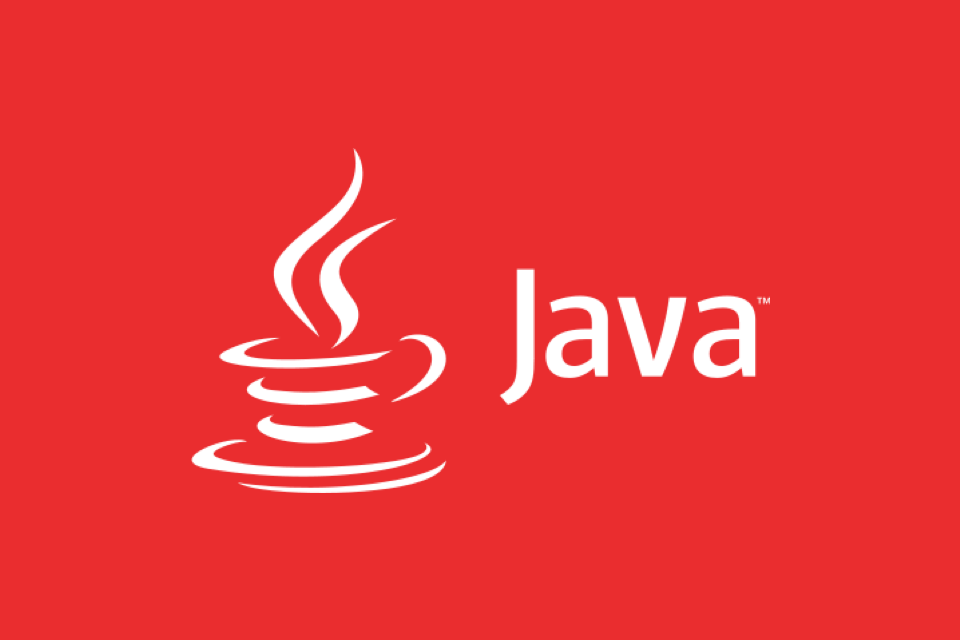Building Resilient Java Microservices with Resilience4j
Jul 26, 2025 am 06:36 AMResilience4j improves the flexibility of Java microservices through circuit breakers, current limiting, retry and other mechanisms. 1. Use circuit breakers to prevent cascade failures and prevent requests from being sent when services fail frequently; 2. Use current limiting to control concurrent access to avoid sudden traffic overwhelming downstream services; 3. Respond to temporary errors through retry mechanisms, but avoid invalid retry and resource waste; 4. Multiple strategies can be used in combination to enhance the overall resilience of the system, but attention should be paid to the mutual influence between policies. Properly configuring these functions can significantly improve the stability and fault tolerance of distributed systems.

Java microservices face many uncertainties in distributed systems, such as network latency and unavailability of third-party services. At this time, Resilience4j becomes a very practical tool. It is not as complex as Hystrix and is designed for Java 8 and functional programming, perfect for modern microservice architectures.

The following key points can help you better build more flexible Java microservices with Resilience4j.
Use circuit breakers to prevent cascade failure
Circuit Breaker is one of the most core functions of Resilience4j. It works like a fuse in a circuit - when a dependent service fails frequently, the circuit breaker will "on" to prevent subsequent requests from continuing to send to the service, thus preventing the entire system from crashing due to a problem with a point.

It's also very simple to use, you can define a circuit breaker like this:
CircuitBreakerRegistry registry = CircuitBreakerRegistry.ofDefaults();
CircuitBreaker circuitBreaker = registry.circuitBreaker("myService");Then wrap your remote call with it:

Supplier<String> decoratedSupplier = CircuitBreaker.decorateSupplier(circuitBreaker, () -> myRemoteCall()); String result = Try.of(decoratedSupplier).recover(throwable -> "fallback").get();
The key is to configure the state transition rules of the circuit breaker, such as how many times it fails, how long it takes to try to open the state after opening, etc. These parameters must be adjusted according to the actual business scenario, and must not be too sensitive or too slow.
Use current limit control to concurrent access
Sometimes, the service is not slack, but is overwhelmed by too many requests. At this time, the Rate Limited function is required.
Resilience4j's current limiter can limit the number of requests per unit time to protect downstream services from sudden traffic breakdown. For example, limit up to 10 requests per second:
RateLimiter rateLimiter = RateLimiter.ofDefaults("myRateLimiter");Then use the decorator mode to wrap the method:
Supplier<String> decorated = RateLimiter.decorateSupplier(rateLimiter, () -> myRemoteCall());
Note: The current limiting strategy needs to be used in conjunction with thread pools or semaphores, otherwise the problem of blocking the main thread may occur. In addition, the current limiting strategies of different interfaces are best configured separately to avoid one-size-fits-all impact on overall performance.
Retry mechanism improves fault tolerance
For some temporary errors (such as short network jitter), automatic retry is a good choice. Resilience4j provides a Retry module that automatically retry failed requests within a specified number of times.
For example:
Retry retry = Retry.ofDefaults("myRetry");
Supplier<String> decorated = Retry.decorateSupplier(retry, () -> myRemoteCall());But a few things to note:
- Not all failures are suitable for retry, such as 4xx errors are usually a client problem, and retry is useless.
- Set a reasonable retry interval and maximum number of times to avoid increasing downstream pressure.
- It can be used in conjunction with a circuit breaker to prevent infinite retry from causing an avalanche effect.
Combining multiple strategies to enhance resilience
The power of Resilience4j is that it can combine multiple policies together. For example, you can add a circuit breaker, current limit and try again:
Supplier<String> chain = Decorators.ofSupplier(() -> myRemoteCall())
.withRateLimiter(rateLimiter)
.withCircuitBreaker(circuitBreaker)
.withRetry(retry)
.decorate();This combination can make your microservices more resilient when facing various abnormal situations. However, you should also pay attention to the mutual influence between strategies. For example, retry may cause the current limit to be triggered faster, and the circuit breaker may enter the open state earlier due to multiple retrys.
Overall, Resilience4j is a lightweight but fully functional library suitable for building robust Java microservices. As long as the key strategies such as circuit breaker, current limiting, and retry are reasonably configured, the stability and fault tolerance of the system can be effectively improved. Basically all is it, not complicated but it is easy to ignore details.
The above is the detailed content of Building Resilient Java Microservices with Resilience4j. For more information, please follow other related articles on the PHP Chinese website!

Hot AI Tools

Undress AI Tool
Undress images for free

Undresser.AI Undress
AI-powered app for creating realistic nude photos

AI Clothes Remover
Online AI tool for removing clothes from photos.

Clothoff.io
AI clothes remover

Video Face Swap
Swap faces in any video effortlessly with our completely free AI face swap tool!

Hot Article

Hot Tools

Notepad++7.3.1
Easy-to-use and free code editor

SublimeText3 Chinese version
Chinese version, very easy to use

Zend Studio 13.0.1
Powerful PHP integrated development environment

Dreamweaver CS6
Visual web development tools

SublimeText3 Mac version
God-level code editing software (SublimeText3)
 How to handle transactions in Java with JDBC?
Aug 02, 2025 pm 12:29 PM
How to handle transactions in Java with JDBC?
Aug 02, 2025 pm 12:29 PM
To correctly handle JDBC transactions, you must first turn off the automatic commit mode, then perform multiple operations, and finally commit or rollback according to the results; 1. Call conn.setAutoCommit(false) to start the transaction; 2. Execute multiple SQL operations, such as INSERT and UPDATE; 3. Call conn.commit() if all operations are successful, and call conn.rollback() if an exception occurs to ensure data consistency; at the same time, try-with-resources should be used to manage resources, properly handle exceptions and close connections to avoid connection leakage; in addition, it is recommended to use connection pools and set save points to achieve partial rollback, and keep transactions as short as possible to improve performance.
 How to work with Calendar in Java?
Aug 02, 2025 am 02:38 AM
How to work with Calendar in Java?
Aug 02, 2025 am 02:38 AM
Use classes in the java.time package to replace the old Date and Calendar classes; 2. Get the current date and time through LocalDate, LocalDateTime and LocalTime; 3. Create a specific date and time using the of() method; 4. Use the plus/minus method to immutably increase and decrease the time; 5. Use ZonedDateTime and ZoneId to process the time zone; 6. Format and parse date strings through DateTimeFormatter; 7. Use Instant to be compatible with the old date types when necessary; date processing in modern Java should give priority to using java.timeAPI, which provides clear, immutable and linear
 Comparing Java Frameworks: Spring Boot vs Quarkus vs Micronaut
Aug 04, 2025 pm 12:48 PM
Comparing Java Frameworks: Spring Boot vs Quarkus vs Micronaut
Aug 04, 2025 pm 12:48 PM
Pre-formanceTartuptimeMoryusage, Quarkusandmicronautleadduetocompile-Timeprocessingandgraalvsupport, Withquarkusoftenperforminglightbetterine ServerLess scenarios.2.Thyvelopecosyste,
 How does garbage collection work in Java?
Aug 02, 2025 pm 01:55 PM
How does garbage collection work in Java?
Aug 02, 2025 pm 01:55 PM
Java's garbage collection (GC) is a mechanism that automatically manages memory, which reduces the risk of memory leakage by reclaiming unreachable objects. 1.GC judges the accessibility of the object from the root object (such as stack variables, active threads, static fields, etc.), and unreachable objects are marked as garbage. 2. Based on the mark-clearing algorithm, mark all reachable objects and clear unmarked objects. 3. Adopt a generational collection strategy: the new generation (Eden, S0, S1) frequently executes MinorGC; the elderly performs less but takes longer to perform MajorGC; Metaspace stores class metadata. 4. JVM provides a variety of GC devices: SerialGC is suitable for small applications; ParallelGC improves throughput; CMS reduces
 Understanding Network Ports and Firewalls
Aug 01, 2025 am 06:40 AM
Understanding Network Ports and Firewalls
Aug 01, 2025 am 06:40 AM
Networkportsandfirewallsworktogethertoenablecommunicationwhileensuringsecurity.1.Networkportsarevirtualendpointsnumbered0–65535,withwell-knownportslike80(HTTP),443(HTTPS),22(SSH),and25(SMTP)identifyingspecificservices.2.PortsoperateoverTCP(reliable,c
 go by example defer statement explained
Aug 02, 2025 am 06:26 AM
go by example defer statement explained
Aug 02, 2025 am 06:26 AM
defer is used to perform specified operations before the function returns, such as cleaning resources; parameters are evaluated immediately when defer, and the functions are executed in the order of last-in-first-out (LIFO); 1. Multiple defers are executed in reverse order of declarations; 2. Commonly used for secure cleaning such as file closing; 3. The named return value can be modified; 4. It will be executed even if panic occurs, suitable for recovery; 5. Avoid abuse of defer in loops to prevent resource leakage; correct use can improve code security and readability.
 Comparing Java Build Tools: Maven vs. Gradle
Aug 03, 2025 pm 01:36 PM
Comparing Java Build Tools: Maven vs. Gradle
Aug 03, 2025 pm 01:36 PM
Gradleisthebetterchoiceformostnewprojectsduetoitssuperiorflexibility,performance,andmoderntoolingsupport.1.Gradle’sGroovy/KotlinDSLismoreconciseandexpressivethanMaven’sverboseXML.2.GradleoutperformsMaveninbuildspeedwithincrementalcompilation,buildcac
 Java Concurrency Utilities: ExecutorService and Fork/Join
Aug 03, 2025 am 01:54 AM
Java Concurrency Utilities: ExecutorService and Fork/Join
Aug 03, 2025 am 01:54 AM
ExecutorService is suitable for asynchronous execution of independent tasks, such as I/O operations or timing tasks, using thread pool to manage concurrency, submit Runnable or Callable tasks through submit, and obtain results with Future. Pay attention to the risk of unbounded queues and explicitly close the thread pool; 2. The Fork/Join framework is designed for split-and-governance CPU-intensive tasks, based on partitioning and controversy methods and work-stealing algorithms, and realizes recursive splitting of tasks through RecursiveTask or RecursiveAction, which is scheduled and executed by ForkJoinPool. It is suitable for large array summation and sorting scenarios. The split threshold should be set reasonably to avoid overhead; 3. Selection basis: Independent






